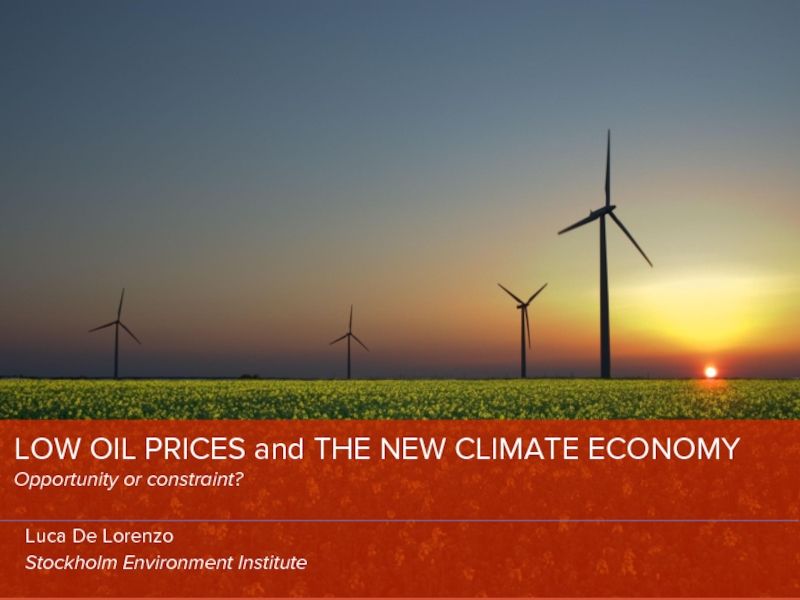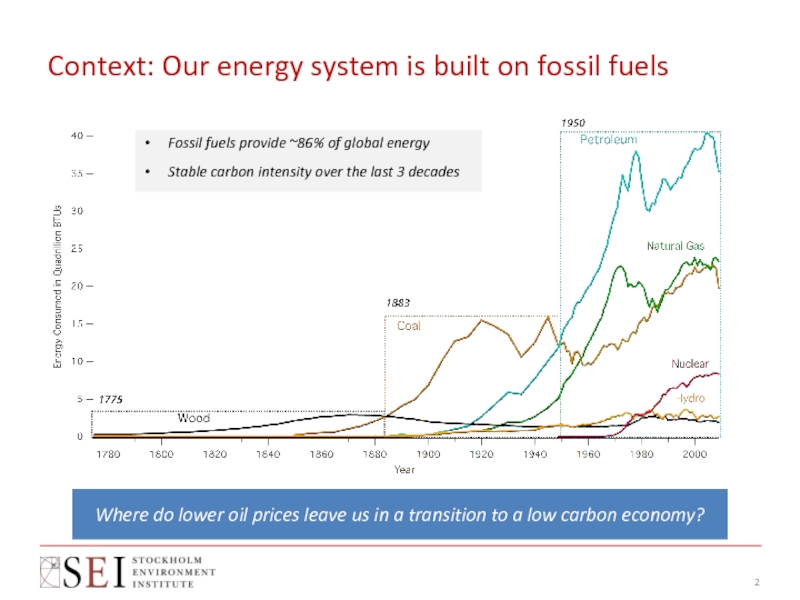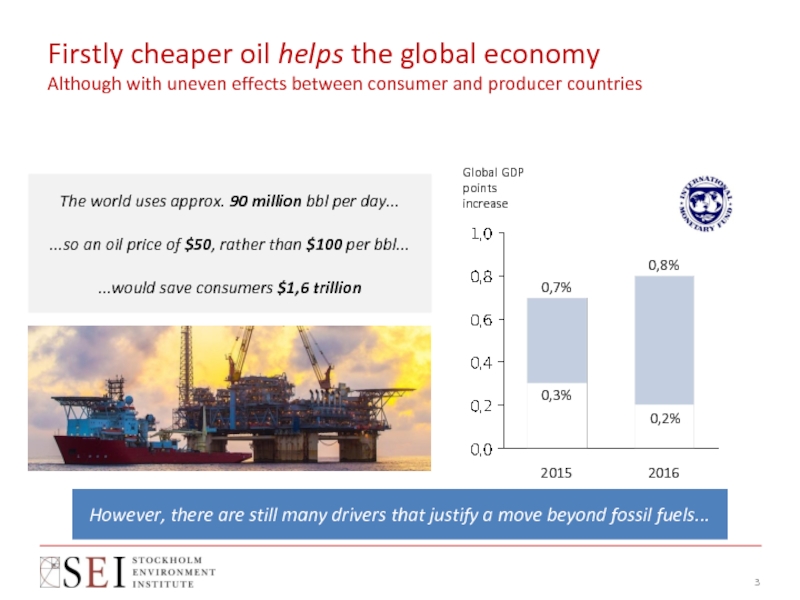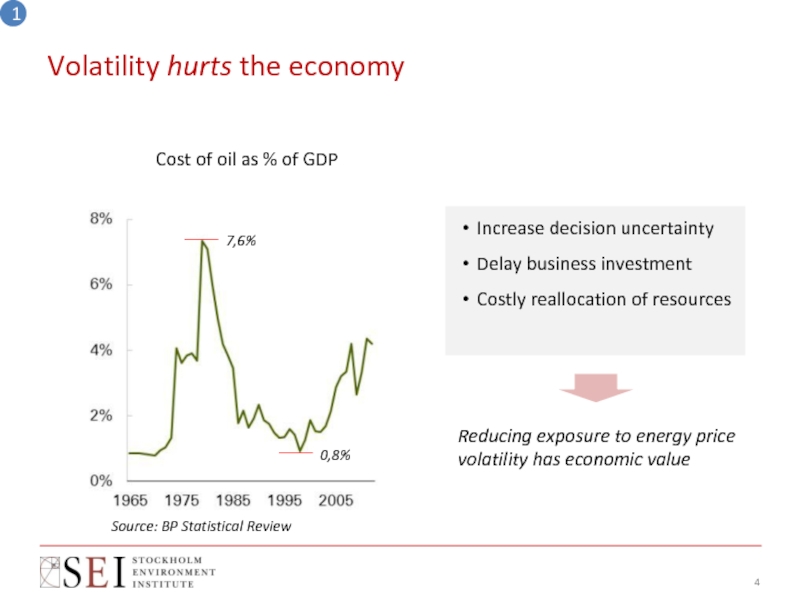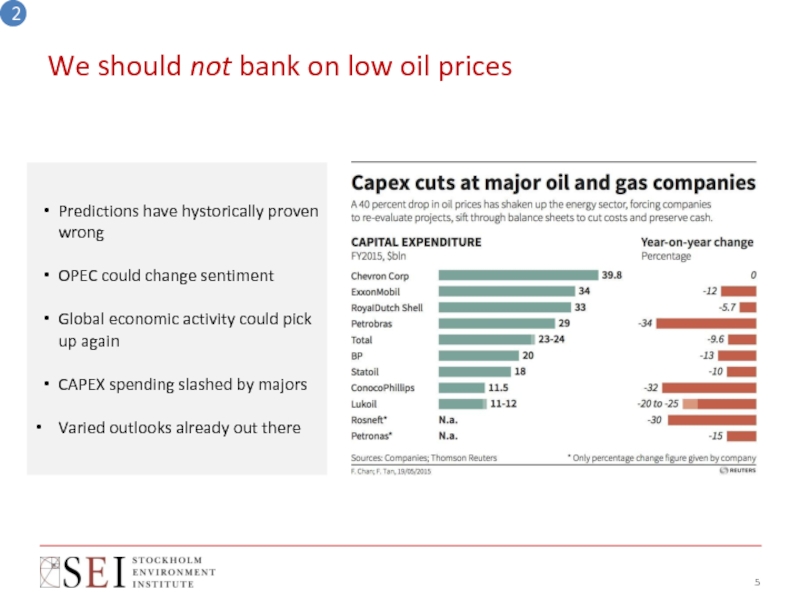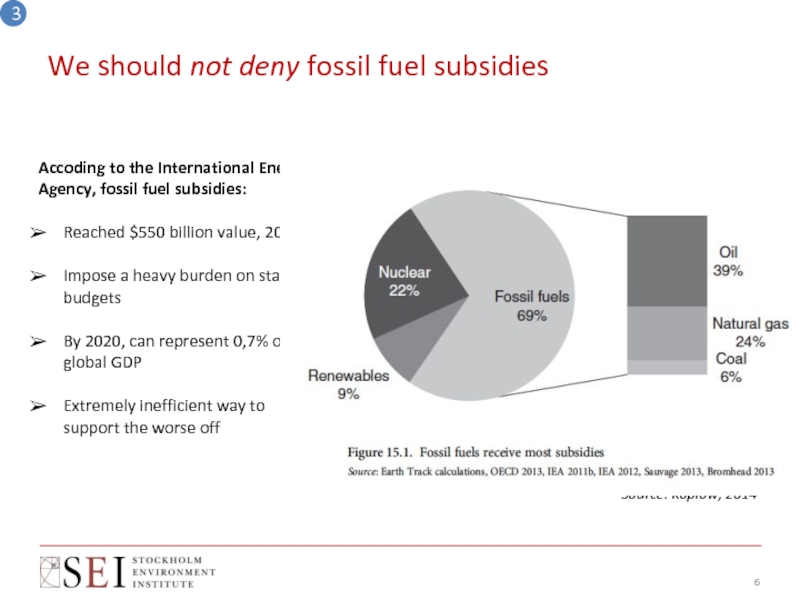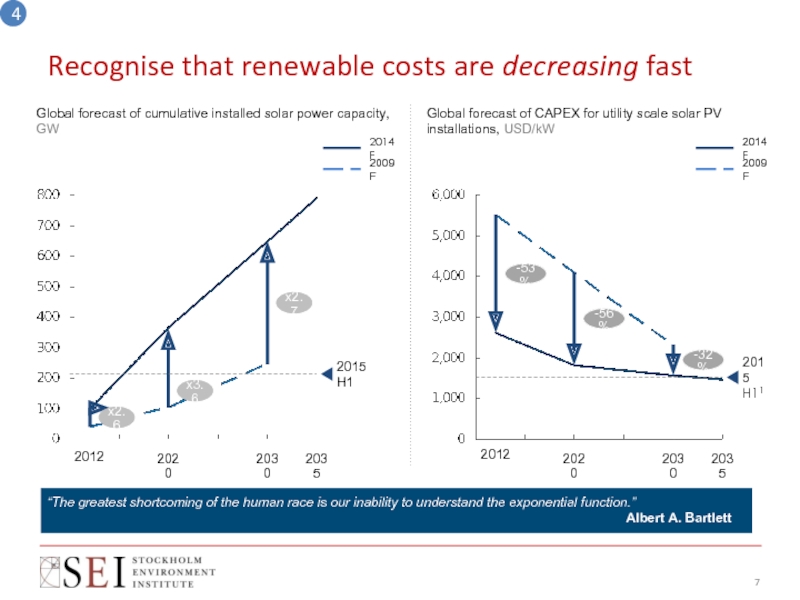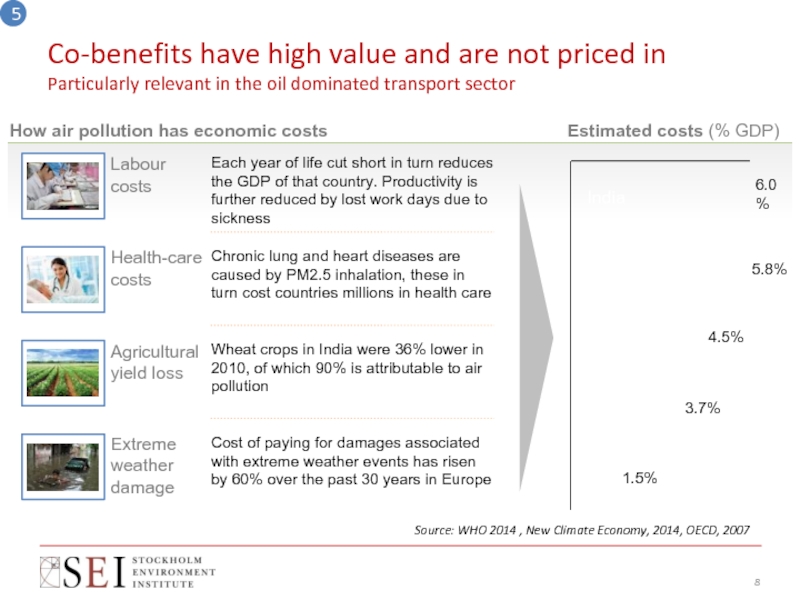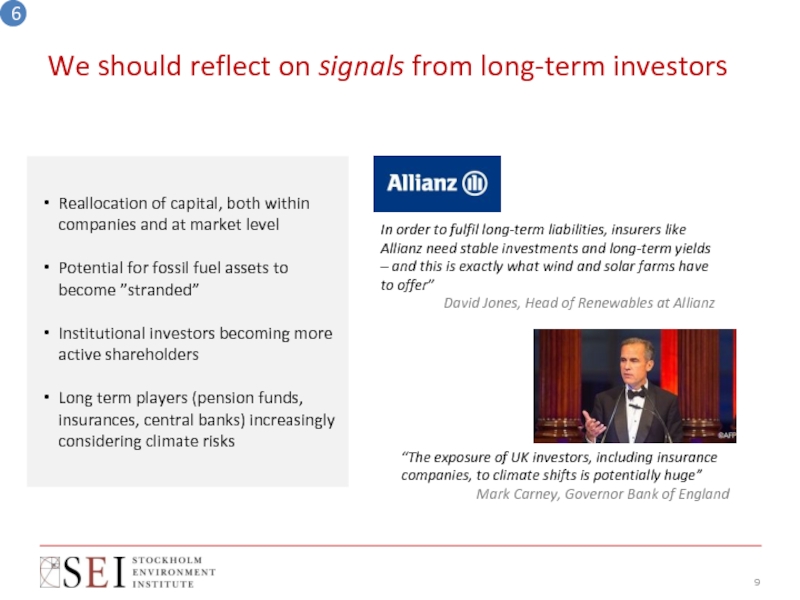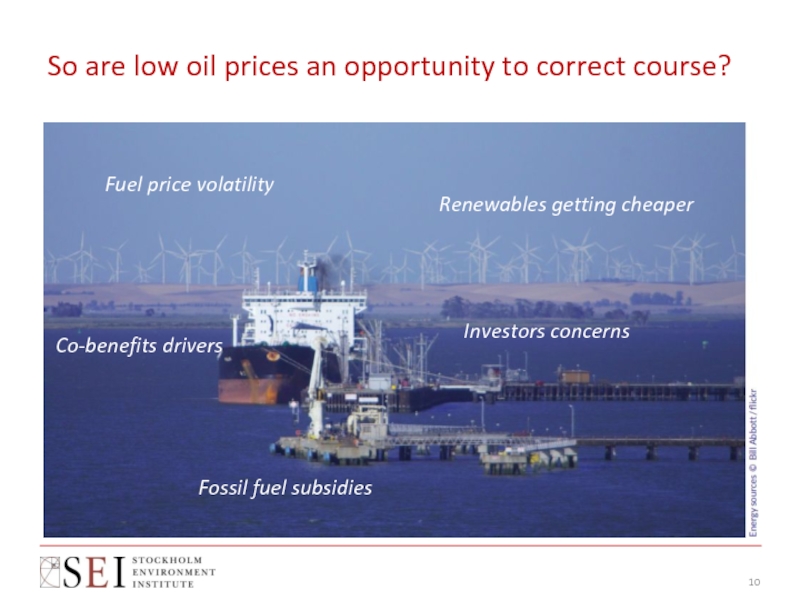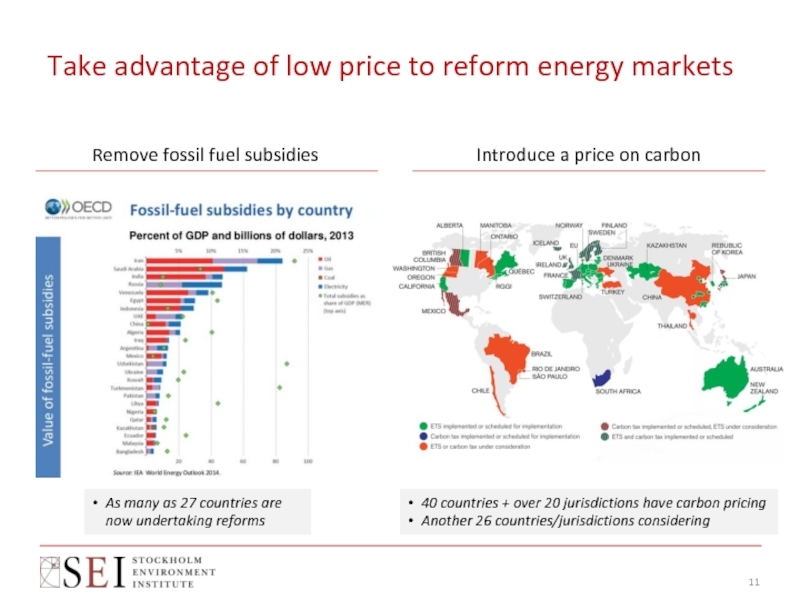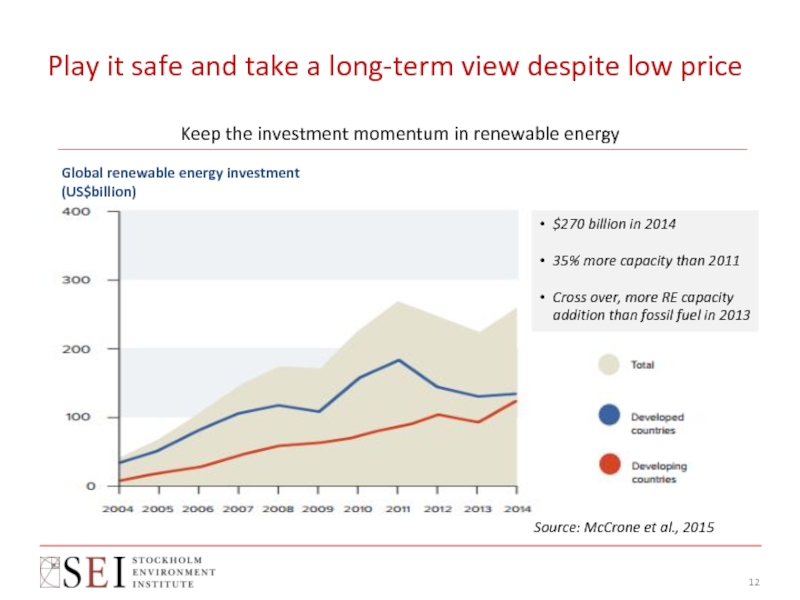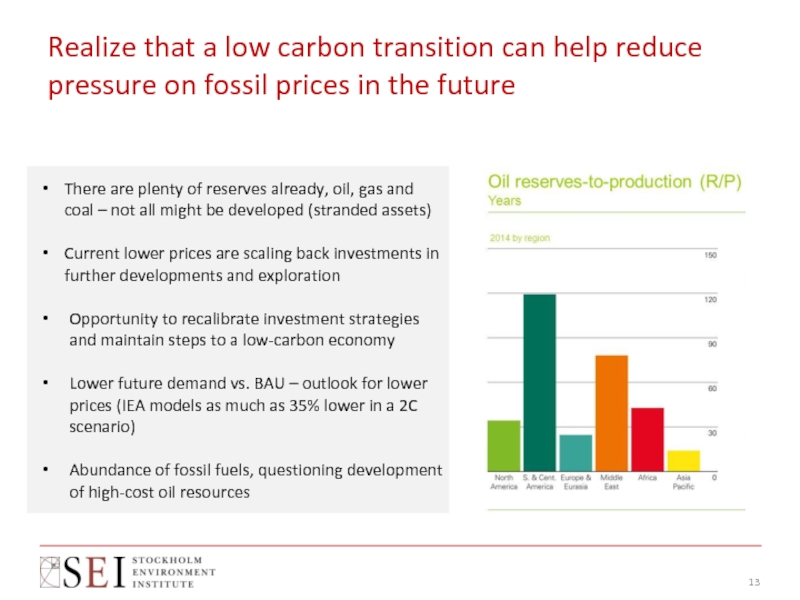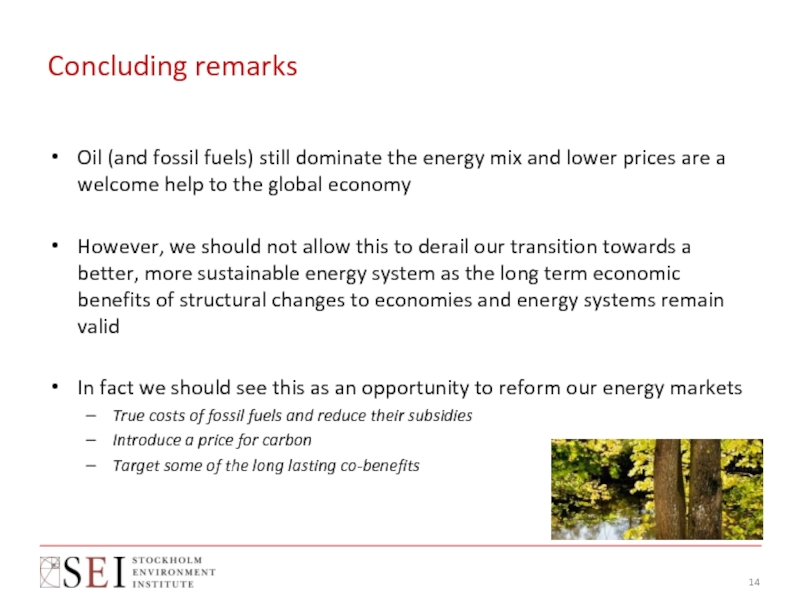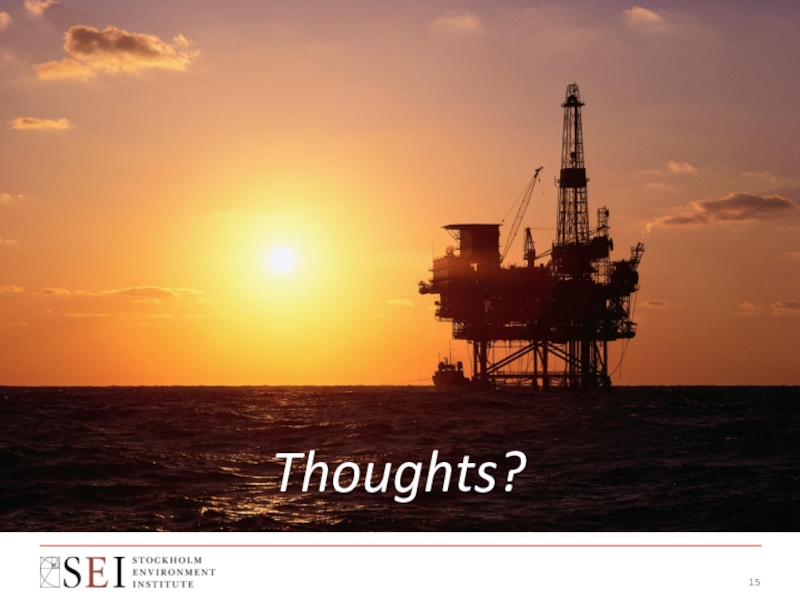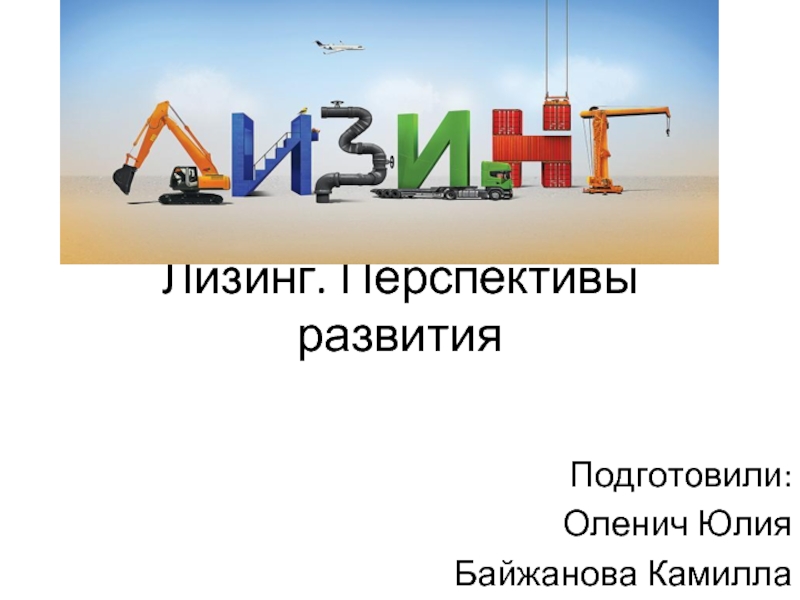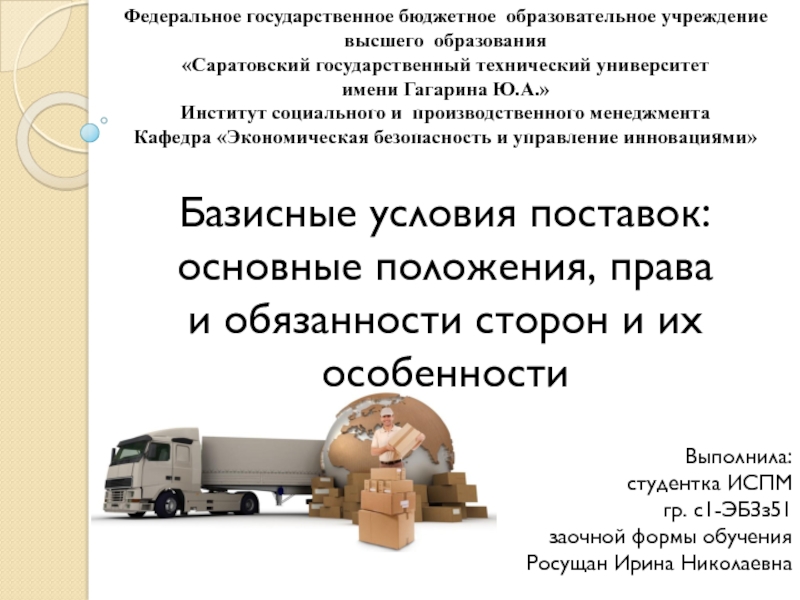- Главная
- Разное
- Дизайн
- Бизнес и предпринимательство
- Аналитика
- Образование
- Развлечения
- Красота и здоровье
- Финансы
- Государство
- Путешествия
- Спорт
- Недвижимость
- Армия
- Графика
- Культурология
- Еда и кулинария
- Лингвистика
- Английский язык
- Астрономия
- Алгебра
- Биология
- География
- Детские презентации
- Информатика
- История
- Литература
- Маркетинг
- Математика
- Медицина
- Менеджмент
- Музыка
- МХК
- Немецкий язык
- ОБЖ
- Обществознание
- Окружающий мир
- Педагогика
- Русский язык
- Технология
- Физика
- Философия
- Химия
- Шаблоны, картинки для презентаций
- Экология
- Экономика
- Юриспруденция
LOW OIL PRICES and THE NEW CLIMATE ECONOMYOpportunity or constraint? презентация
Содержание
- 1. LOW OIL PRICES and THE NEW CLIMATE ECONOMYOpportunity or constraint?
- 2. Context: Our energy system is built on
- 3. Firstly cheaper oil helps the global economy
- 4. Volatility hurts the economy 1 Increase decision
- 5. We should not bank on low oil
- 6. We should not deny fossil fuel subsidies
- 7. Recognise that renewable costs are decreasing fast
- 8. Co-benefits have high value and are not
- 9. We should reflect on signals from long-term
- 10. So are low oil prices an opportunity
- 11. Take advantage of low price to reform
- 12. Play it safe and take a long-term view despite low price
- 13. Realize that a low carbon transition can
- 14. Concluding remarks Oil (and fossil fuels) still
- 15. Thoughts?
Слайд 1
LOW OIL PRICES and THE NEW CLIMATE ECONOMY
Opportunity or constraint?
Luca De
Stockholm Environment Institute
Слайд 2Context: Our energy system is built on fossil fuels
Where do lower
Fossil fuels provide ~86% of global energy
Stable carbon intensity over the last 3 decades
Слайд 3Firstly cheaper oil helps the global economy Although with uneven effects between
2016
0,8%
2015
0,7%
Global GDP
points increase
The world uses approx. 90 million bbl per day...
...so an oil price of $50, rather than $100 per bbl...
...would save consumers $1,6 trillion
0,3%
0,2%
However, there are still many drivers that justify a move beyond fossil fuels...
Слайд 4Volatility hurts the economy
1
Increase decision uncertainty
Delay business investment
Costly reallocation of resources
Cost
Reducing exposure to energy price volatility has economic value
7,6%
0,8%
Source: BP Statistical Review
Слайд 5We should not bank on low oil prices
2
Predictions have hystorically
OPEC could change sentiment
Global economic activity could pick up again
CAPEX spending slashed by majors
Varied outlooks already out there
Слайд 6We should not deny fossil fuel subsidies
3
Source: Koplow, 2014
Accoding to the
Reached $550 billion value, 2013
Impose a heavy burden on state budgets
By 2020, can represent 0,7% of global GDP
Extremely inefficient way to support the worse off
Слайд 7Recognise that renewable costs are decreasing fast
4
2020
2035
2030
2015
H1
x2.7
x3.6
x2.6
2012
2035
2030
2020
-32%
-53%
2015
H11
-56%
2012
2009F
2014F
2014F
2009F
“The greatest shortcoming
Слайд 8Co-benefits have high value and are not priced in Particularly relevant in
5
How air pollution has economic costs
Each year of life cut short in turn reduces the GDP of that country. Productivity is further reduced by lost work days due to sickness
Chronic lung and heart diseases are caused by PM2.5 inhalation, these in turn cost countries millions in health care
Wheat crops in India were 36% lower in 2010, of which 90% is attributable to air pollution
Cost of paying for damages associated with extreme weather events has risen by 60% over the past 30 years in Europe
Extreme weather damage
Agricultural yield loss
Health-care costs
Labour costs
3.7%
UK
Germany
USA
4.5%
India
6.0%
1.5%
5.8%
China
Estimated costs (% GDP)
Source: WHO 2014 , New Climate Economy, 2014, OECD, 2007
Слайд 9We should reflect on signals from long-term investors
6
Reallocation of capital, both
Potential for fossil fuel assets to become ”stranded”
Institutional investors becoming more active shareholders
Long term players (pension funds, insurances, central banks) increasingly considering climate risks
“The exposure of UK investors, including insurance companies, to climate shifts is potentially huge”
Mark Carney, Governor Bank of England
In order to fulfil long-term liabilities, insurers like Allianz need stable investments and long-term yields – and this is exactly what wind and solar farms have to offer”
David Jones, Head of Renewables at Allianz
Слайд 10So are low oil prices an opportunity to correct course?
Fuel price
Renewables getting cheaper
Fossil fuel subsidies
Investors concerns
Co-benefits drivers
Слайд 11Take advantage of low price to reform energy markets
Remove fossil fuel
Introduce a price on carbon
As many as 27 countries are now undertaking reforms
40 countries + over 20 jurisdictions have carbon pricing
Another 26 countries/jurisdictions considering
Слайд 13Realize that a low carbon transition can help reduce pressure on
There are plenty of reserves already, oil, gas and coal – not all might be developed (stranded assets)
Current lower prices are scaling back investments in further developments and exploration
Opportunity to recalibrate investment strategies and maintain steps to a low-carbon economy
Lower future demand vs. BAU – outlook for lower prices (IEA models as much as 35% lower in a 2C scenario)
Abundance of fossil fuels, questioning development of high-cost oil resources
Слайд 14Concluding remarks
Oil (and fossil fuels) still dominate the energy mix and
However, we should not allow this to derail our transition towards a better, more sustainable energy system as the long term economic benefits of structural changes to economies and energy systems remain valid
In fact we should see this as an opportunity to reform our energy markets
True costs of fossil fuels and reduce their subsidies
Introduce a price for carbon
Target some of the long lasting co-benefits
